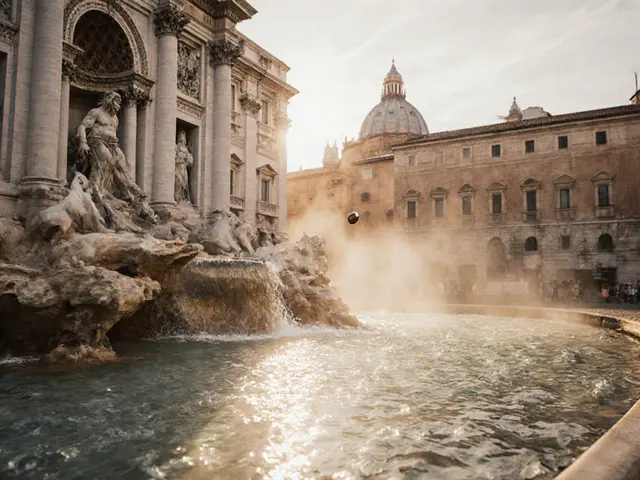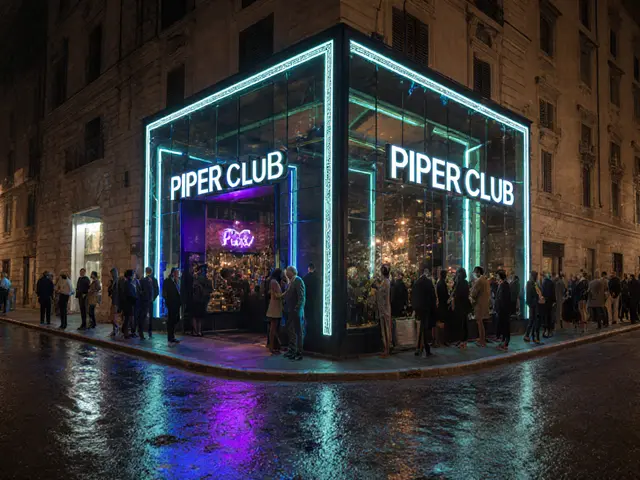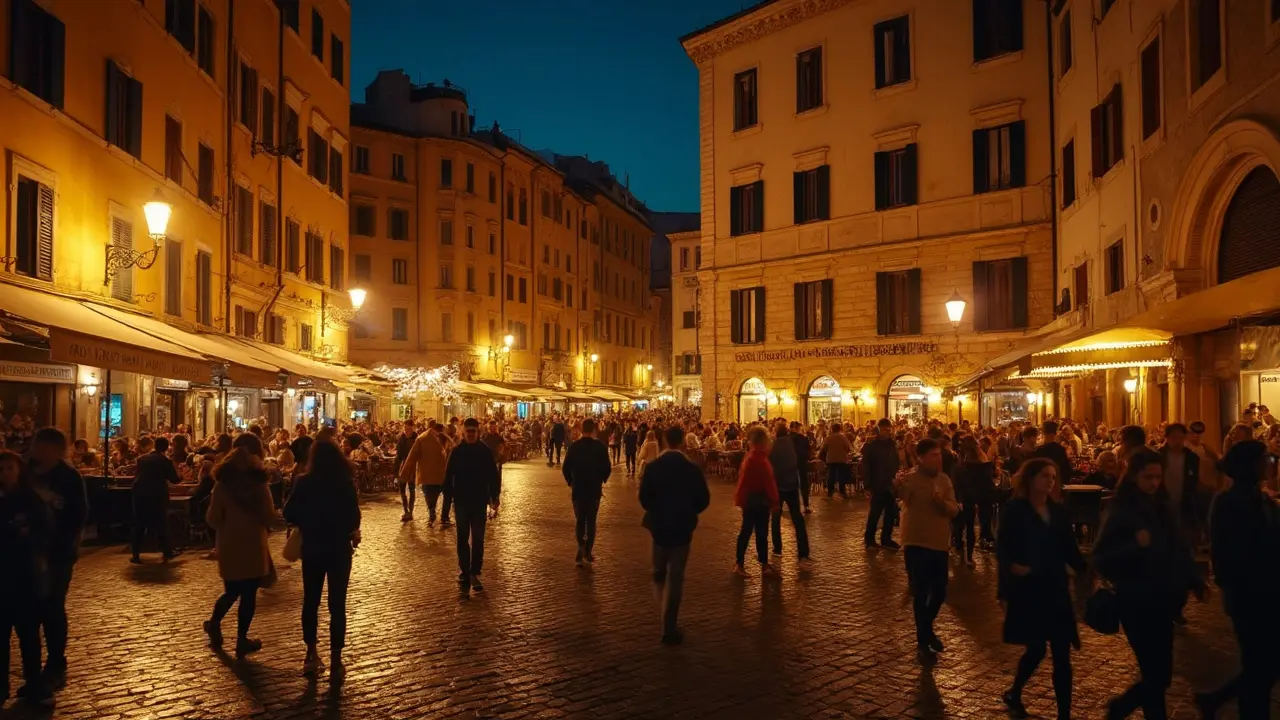
The moment the sun slips behind St. Peter’s dome and Rome’s streetlights flicker to life, it feels like the city gets a reset button. The crowds thin at the big landmarks. Restaurants start buzzing as Romans drift in for dinner at 9 or even 10 p.m. That’s when Rome whispers its best secrets. Things slow down on these ancient streets, but something also gets more electric. There’s art, history, and wild energy around every corner—if you know where to look after darkness falls.
The Best Night Walks: Rome’s Landmarks After Dark
Forget the daytime chaos—at night, Rome’s big sights finally breathe. The Colosseum glows with golden light, looking even more gladiatorial minus the selfie sticks. Walk from the Colosseo down Via dei Fori Imperiali. Sure, you’ve seen the Roman Forum by daylight, but under floodlights it’s plain haunting. Without the crowds, you almost feel the echoes of ancient Rome pulsing in those structures.
If you're into people-watching—or just love gelato—make Piazza Navona your next stop. This square is one of Rome’s nighttime playgrounds: musicians fiddle, painters hawk quick portraits, fountains sparkle. Bernini’s Four Rivers fountain, all writhing stone and shimmering spray, just hits differently when the moon’s up. Tip: nearby, you’ll find little bars that serve Aperol Spritz as late as midnight.
The Pantheon at night is surreal. The crowds trickle away, the piazza opens up, and when you stand in silence staring at that perfect dome, you get why Roman engineers were the OG geniuses. Some say the best trick is to grab a late espresso or amaro from a café facing the temple and just sit. If you’re lucky, there might be a street guitarist warming up the night air with jazz standards. If you keep wandering west, Via della Pace has a hip feel, especially around the ivy-wrapped Caffè della Pace.
The Trevi Fountain—packed with tourists all day—still draws visitors at midnight, but the vibe is way cooler. Toss that coin over your shoulder for good luck. Legend has it, about €3,000 in coins are scooped up every night and donated to local charities.
Head across the river and the Vatican deserves a nighttime detour—even though you can’t tour St. Peter’s late, the square is open and weirdly peaceful. If you’re lucky enough to land in Rome during a rare Vatican night tour (usually in summer months), grab the chance. The museums are less crowded, and the Sistine Chapel with just a handful of visitors feels like the real thing Michelangelo must have imagined.
Here’s a quick table comparing nighttime crowd levels at Rome’s top landmarks based on summer 2024 data:
| Landmark | Average Nighttime Visitors (per hour) | Peak Hours |
|---|---|---|
| Colosseum | 400 | 8–10 p.m. |
| Piazza Navona | 1100 | 9 p.m.–Midnight |
| Trevi Fountain | 950 | 10 p.m.–1 a.m. |
| Pantheon | 600 | 9–11 p.m. |
| Vatican Square | 210 | 8–10 p.m. |
These numbers might seem high—Rome’s never empty—but they’re a fraction of the daytime traffic. For quieter moments, visit just before midnight.
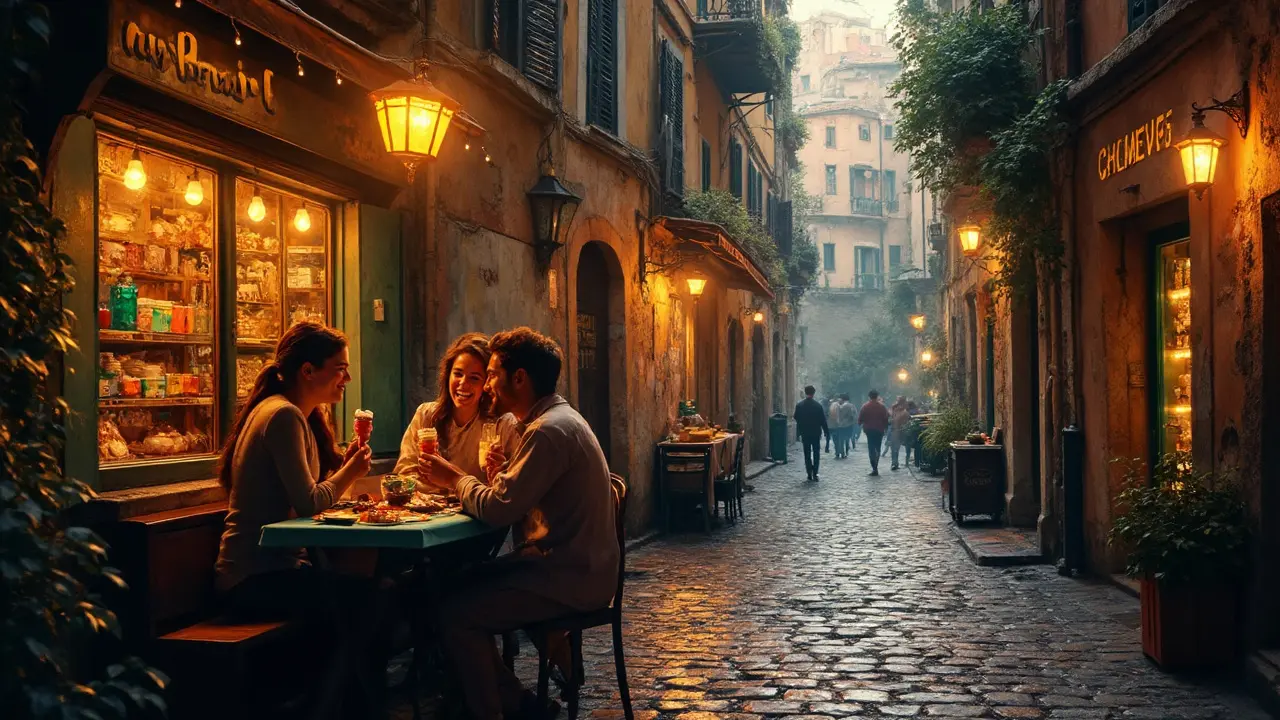
Rome Nightlife: Bars, Trattorias, and Late-Night Eats
Locals don’t start dinner until dusk is long gone. Most authentic trattorias don’t even open their kitchens before 7:30 p.m.—and the crowds are still piling in at 10:30. So, dinner is already a nighttime event. Romans pride themselves on savoring food, wine, and conversation. There’s no rush, no bill shoved at you to clear the table. That’s time to loosen your belt and dig into plates of cacio e pepe, carciofi alla giudia, or a lazy tiramisù with an espresso finale.
If you ask a Roman for true nightlife, they’ll steer you beyond tourist hotspots. Campo de’ Fiori is lively, for sure, and the bars ringing the square are a favorite with visiting students and young locals alike. But for a more grown-up vibe, Trastevere is magic after dark. Winding cobbled lanes light up with fairy tales—wine bars, vintage cocktail dens, and tiny doors that somehow fit a dozen people inside. “Freni e Frizioni” is an old mechanic’s garage-turned-cocktail bar with a famous free aperitivo snack table. It’s packed inside but feels delightfully messy in the best Italian way.
San Lorenzo, just east of Termini, is where Rome’s student crowd and artists hang out. Hipster bars, cheap pizza joints, street art, and the city’s best late-night kebab keep you fueled. Look for places like “Said,” a 1920s chocolate factory that's now a dessert bar—dark chocolate mousse, anyone?
Monti is another hidden gem. This old-school neighborhood between the Colosseum and Via Nazionale has bars that buzz until late, vintage record stores, and Roman osterias with the kind of carbonara Grandma would approve of. “Ai Tre Scalini” is a legendary wine bar—walk past a mossy, ancient exterior and find locals spilling wine and secrets on the sidewalk.
After dinner, when streetlights soften the stones, Romans stroll. The Italian word is “passeggiata”—a ritual evening walk. No matter where you are, join the current. Romans dress up (even to walk their dogs), so don’t be shy to slink on something sharp. You’ll soak up the real pulse of the city just by wandering and people-watching.
Late-night eats? Beyond pizza by the slice (Pizza al Taglio) and gelato (which you’ll never regret even at 2 a.m.), try “trapizzino”—a Roman street food specialty, sort of a pizza-sandwich hybrid, filled with everything from meatballs to eggplant parmesan. Trapizzino shops in Trastevere and Testaccio serve till late and are legendary with locals after a few Negronis. If you spot a bakery window about to pull out trays of hot maritozzi (sweet cream-filled buns) at dawn, grab one—it’s Rome's answer to a midnight donut.
Here are a couple of pro tips for a solid Rome nightlife experience:
- Most bars in historic Rome don’t have hefty cover charges, but watch for higher “coperto” or table fees in touristy areas. Standing at a bar is cheaper than sitting, especially near big squares.
- The legal drinking age is 18, and the bars usually close by 2 or 3 a.m. Only clubs stay open all night—and those tend to be a taxi ride away, mostly near Testaccio or Ostiense.
- If you want to blend in, don’t ask for a cappuccino after dinner. Romans consider this heresy—it’s strictly a breakfast drink. Opt for an espresso or grappa instead.
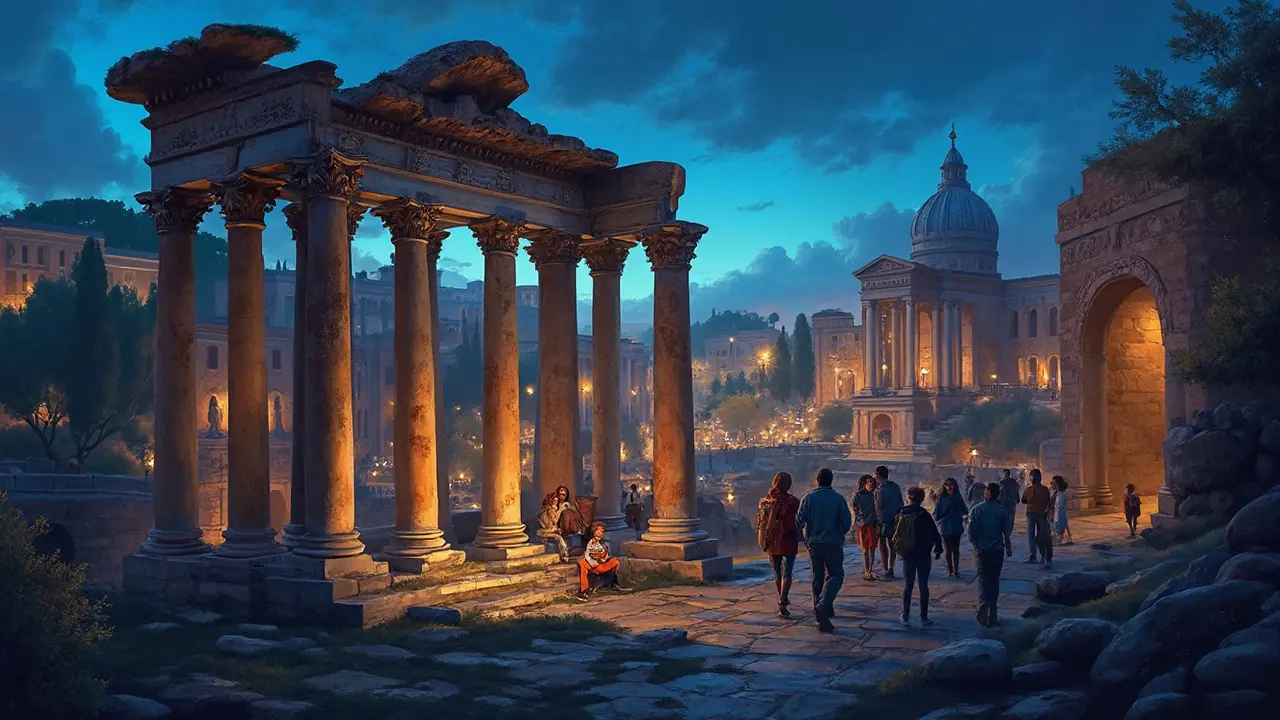
Quirky Rome After Dark: Night Tours, Festivals, and Late Art
Rome at night is more than drinks and dinner. The city comes alive with night-time tours, midnight cinema, live music, festivals and amazing cultural surprises—most that you’ll miss if you only stick to daylight hours.
Let’s talk tours: Nothing beats a night walking tour or bike ride to unlock secret spots, weird legends, and hidden history. Scared of ghosts? Rome’s packed with ‘em. Some of the most popular after-dark tours wind you down alleys haunted by noble families, ancient specters, and even the real-life inspiration behind Bram Stoker’s Dracula—Vlad the Impaler spent years in Roman captivity. If you’re into crime, murder, and mystery, “Angels & Demons” or “Ghosts of Rome” night tours bring the chills with real stories, not just tourist fluff.
For a more peaceful fix, try moonlit strolls along the Tiber River. In summer, stalls pop up selling local crafts, snacks, books, and live music right by the water. There’s a slice of pizza in one hand, local craft beer in the other—that’s the Rome riverside life. And if you time it right, the famed “Lungo il Tevere” summer festival fills the banks with art, open-air movies, and indie bands every night from June to September.
Art-loving night owls can get a different fix at the city’s museums. While not every spot is open late year-round, places like the MAXXI (modern art museum) and Galleria Borghese occasionally hold “Notte al Museo” events for all-night openings—sometimes free. Locals camp out for these, so snag your ticket early. Even the Vatican Museums open late on select summer Fridays. Seeing the Sistine Chapel with only a handful of people? Worth every euro, even if you’re only pretending you understand Renaissance symbolism.
When it comes to music, dive into Rome's club scene if you want to dance till breakfast. Popular spots are hidden in ex-industrial buildings near Ostiense or across from the Pyramid of Cestius. For a more Italian twist, check for live jazz bars—Alexanderplatz Jazz Club is the standout, where pros have been blowing sax and sipping Negroni since 1984.
Here's a quick table of the most popular Roman summer night events, with stats pulled from 2024's festival season:
| Event/Festival | Avg. Nightly Visitors | Best Months |
|---|---|---|
| Lungo il Tevere Festival | 6500 | June–September |
| Notte al Museo (Various Museums) | 2100 | May–October |
| Summer Opera at Caracalla Baths | 3100 | July–August |
| Vatican Museums Friday Nights | 2300 | April–October |
If you spot huge lines for Caracalla Baths in late July, it’s probably opera night—one of the wildest nights you’ll spend under the stars. The ruins turn into a natural amphitheater, and Puccini’s high notes bounce off ancient stones. Dress code: anything goes, but locals love sprucing up for date night at the opera.
If you fancy open-air movies, pick up listings for “Isola del Cinema.” This festival runs on Tiber Island every summer—grab a beer, perch on the riverbank, and watch classic Italian films flicker over the water. Even if you don’t catch all the dialogue, the atmosphere’s unbeatable.
- Rome's main subway lines close by 11:30 p.m. on weekdays and 1:30 a.m. on weekends. If you’re far from your hotel, grab a night bus (look for "N" before the route number) or snag a taxi at an official stand—unofficial cabs aren't insured and can be iffy with meters.
- Want to feel like a local? Download small Italian music playlists. Italians always have a soundtrack for a passeggiata. And there’s something about old stone and soft lighting that makes even cheesy ‘80s ballads feel cinematic.
- Even in 2025, most Roman nightlife isn’t about wild partying—it's relaxed, social, and stretched over hours. Don’t rush. The city always rewards patience and curiosity after dark.
If you’re hunting for that "Roman Holiday" magic after the sun goes down, let your curiosity lead. Rome shines brightest when the day’s crowds vanish and the real storytelling begins. These are the hours when the Eternal City earns its name—and you start to wonder if it’s possible to ever go to bed before 2 a.m. again.


